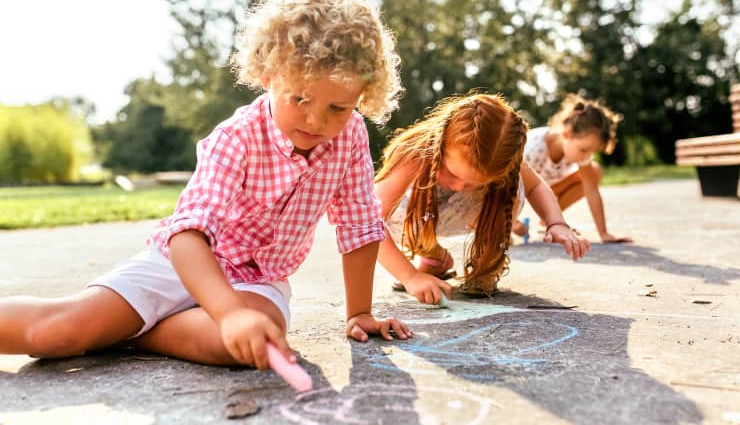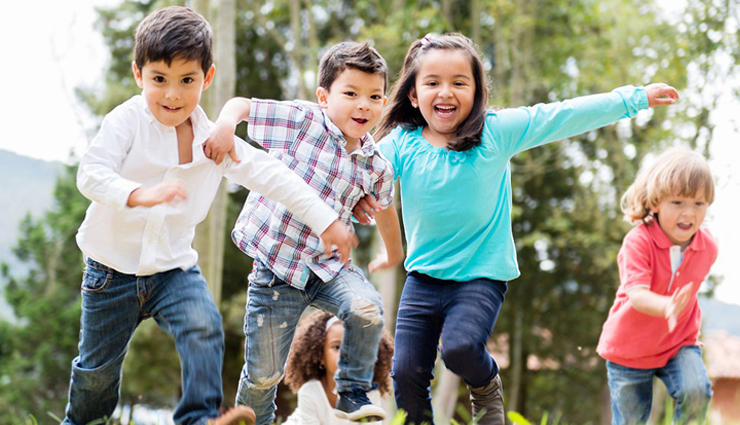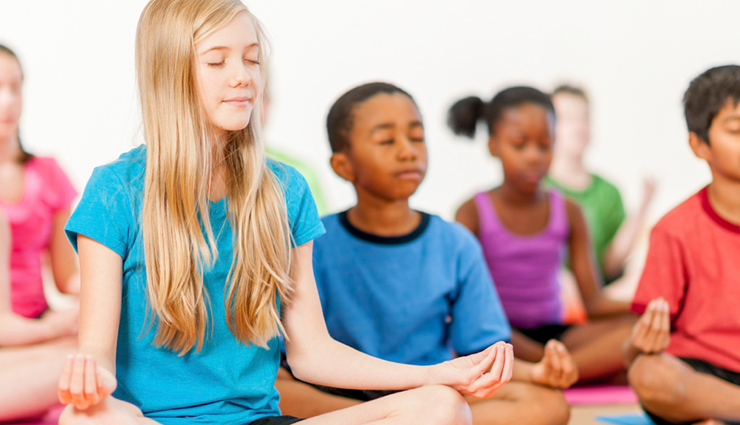- Home›
- Mates & Me›
- Here Are 11 Simple But Effective Ways To Teach Your Child Mindfulness Skills
Here Are 11 Simple But Effective Ways To Teach Your Child Mindfulness Skills
By: Priyanka Maheshwari Mon, 21 Sept 2020 4:43:28

Although mindfulness isn’t new—it’s rooted in Buddhist tradition—it only gained popularity in the West over the past few decades. And most recently, researchers have discovered the benefits of teaching mindfulness to kids.
Mindfulness is about becoming fully aware of what’s happening in the present moment. And in today’s fast-paced world, it’s easy to miss what’s going on around you.
Many people go through the motions of their daily routines without being fully aware of what’s going on around them. Whether they’re distracted with something that happened yesterday, or they’re worried about something that might happen tomorrow, they’re missing out on what’s happening right now.
And just like adults, kids are easily distracted and quite often, they’re unaware of their circumstances. That can lead to difficulties for children, like managing their emotions or trouble controlling their behavior.
That’s why some schools are adopting mindfulness programs. Schools who teach mindfulness skills to kids report fewer discipline problems and better engagement from students.
There are many ways to teach children to become more mindful. You can adapt these exercises to fit the needs of children from preschoolers to teens. Here are 11 simple but effective ways to teach your child mindfulness skills:

Pretend to Walk on Thin Ice
Teach your child to become more aware of his body and his movements. Tell him to pretend he’s walking on thin ice and he has to move slowly and carefully around the room.
You can bring more awareness to his movements by pretending you’re a radio announcer. Say things like, “You’re picking your right leg up slowly and carefully putting it back down.”
There are many other games you can invent to encourage your child to move slowly and carefully. For example, toss a balloon in the air and tell him the balloon is a fragile egg and he has to carefully try to keep it in the air without breaking it.
Journal About Specific Activities
Ask your child to write about his daily activities (or invite him to tell you about it so you can write it down). Pick a specific part of the day, like his morning routine or his afternoon at school and ask him to recall what he did.
The first couple of times he does this exercise he may be vague like, “I had recess and then we had math class.” Don’t correct him or dig for more details. Instead, remind him you’ll do it again tomorrow.
With practice, there’s a good chance he will start walking through his day with more detail. He might start saying things like, “I felt really hot when I was running across the playground. So I sat down on the bench for a minute to catch my breath.”
Smell the Roses
Scent is a great way to help kids become more aware of the here-and-now. An easy way to engage his sense of smell is to give him something aromatic, like a flower or an orange peel.
Invite him to close his eyes and concentrate on what he smells. Spend a few minutes just paying attention to the aroma. Then ask him a few simple questions like, “What do you think of that smell?”

Count Breaths
A simple way to quiet your child’s mind is to teach him to pay attention to his breathing. Encourage him to close his eyes and count breaths.
Tell him to think “one” when he inhales and “two” when he exhales. Teach him to return to counting when his mind wanders.
The exercise shouldn’t change his breathing. Instead, it should be about helping him become more aware of his breaths and how his body and lungs feel when he’s mindful.?
Cool the Pizza
“Cool the pizza” is a breathing exercise that will help your child become more aware of his bodily sensations.
Tell your child to breathe in through his nose like he is smelling a piece of pizza. Then, tell him to blow out through his mouth, like he’s cooling the piece of hot pizza.
Practice this often when your child is calm. Then, when he’s angry or anxious, remind him to become more mindful by saying, “Cool the pizza.”
Blindfolded Taste Test
It’s easy to scarf down food without paying attention to the taste. Get your child to be more in tune with his taste buds by doing a blindfolded taste test.
Blindfold your child and give him a small bite of a specific food, like a banana or a strawberry. Tell him to move the food around in his mouth for a minute and see if he can tell you what it is.

Savor the Flavor
Another way to involve your child’s sense of taste is by encouraging her to savor the flavor. Give her a specific piece of food, like a piece of candy or a raisin.
Encourage her to look at the piece of food for about a minute. Then, have her put it in her mouth but tell her not to chew it right away.
Instead, instruct her to pay attention to how it tastes and how it feels in her mouth. She may experience textures or tastes she’s never noticed before.
Draw an Everyday Object
Give your child an ordinary object, like a leaf or a rock. Encourage him to hold it in his hands and spend some time looking at it. Even though he probably sees similar objects all the time, looking at it more closely can give him a new perspective.
Then, tell him to draw the object. Tell him to take his time and include some details.
Progressive Muscle Relaxation
Progressive muscle relaxation is all about learning to pay attention to muscles in different parts of the body. The goal is to learn to relax muscles that may have become tense without the individual even noticing.
Tell your child to lie down. Then, tell him to tighten and then relax specific muscle groups one at a time—starting with his feet and then his calves. Keep going until you get up to his head.
There are many different scripts you can use, depending on the age of your child. There are also online tutorials or audio programs that can help walk your child through the steps.
Listen to the Bell
For this exercise, use a chime or a real bell if you have one. If you don’t, search for an online app or video that sounds like a real bell. Pick one where the sound reverberates for at least 10 seconds.
Tell your child to listen to the bell. Then, tell him to close his eyes and see if he can hear it better when his eyes are closed.
You can also tell him to sit quietly and count how many times you ring the bell. Over the course of several minutes ring the bell. Allow for variable amounts of silence in between rings.
Practice Yoga
Yoga is a great way to increase your child’s awareness of the connection between his mind and his body. Kid-friendly yoga poses can help him become more mindful.
Sign your child up for a yoga class or look for kid-friendly yoga videos to practice at home. You can practice yoga together as well and incorporate it into your daily routine.
Like other mindfulness practices, yoga will teach your child life skills.





